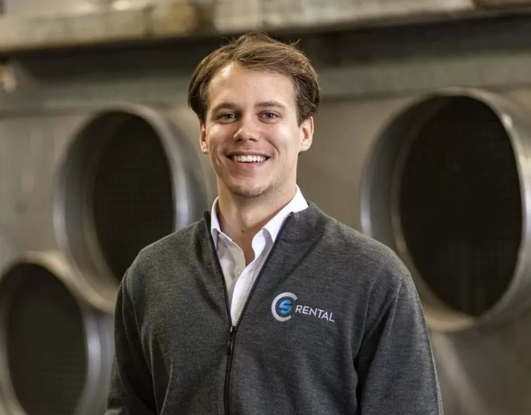TOOLS
Guidelines for underfloor heating / heating-up protocol
This warm-up and cool-down protocol should preferably be carried out several times before installing a floor covering or finish (plastic floor, tiles, flagstones, parquet, laminate, marmoleum, etc.).
In this warm-up and cool-down protocol, underfloor heating means a hot water pipe embedded in a floor. The floor should be at least 25 mm thick above the water pipe.
Cracks can appear in screeds with underfloor heating due to thermal length changes. To minimise this risk, the underfloor heating should be warmed up slowly and regularly. It is advisable to apply the warm-up and cool-down protocol below. A warm-up and cool-down protocol for underfloor heating is based on the water temperature of the heating system and not on any thermostat temperature in the room in question.
It is wise to continue the process until the water has reached a temperature of no more than 40°C. As a general rule, the water should not get hotter than a maximum of 40°C. Installation companies often specify 55°C as the maximum temperature. However, this leads to a significantly increased risk of cracks and detachment. If it is not necessarily necessary to maintain 55°C, it is advisable to adjust the heating protocol to 40°C. Definitely do not go higher than 55°C. This is because the risk of damage increases enormously! It is also important that the screed is approximately at final strength. Because of this, cement-bound screeds should preferably not be heated within 28 days.
Heating and cooling protocol:
Start with a water temperature that is 5°C higher than the ambient temperature of the room in question. The water temperature should be read on the heating system. Increase the water temperature by 5°C every 24 hours (or longer), until the practical maximum water temperature of 40°C is reached (see notes above). Keep the maximum water temperature stable at 40°C for at least 24 hours. Then reduce the water temperature by 5°C every 24 hours until the starting temperature is reached again. It is increasingly common that an underfloor heating system can also cool. With such a system, it is important (especially in summer when temperatures are high) that the cooling cycle is continued until the minimum temperature at the heating and cooling unit is 15°C. If sufficient time is available, repeat this cycle several times. It is wise to provide this start-up/cool-down protocol to the end user/consumer for normal use after commissioning. Indeed, the start-up/cool-down protocol should be followed even after prolonged downtime of the underfloor heating system.
| Day 1 | Water temperature 20°C | Day 2 | 25°C |
| Day 3 | 30°C | Day 4 | 35°C |
| Day 5 | 40°C | Day 6 | 40°C |

